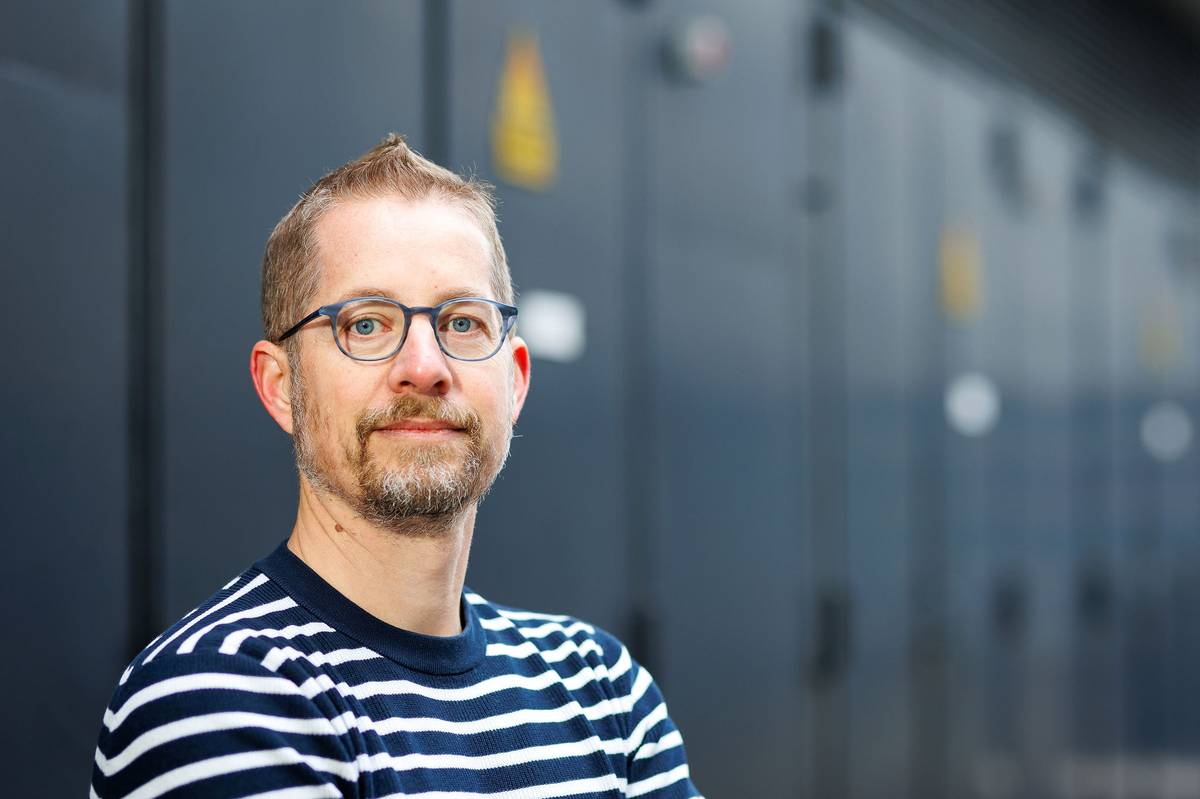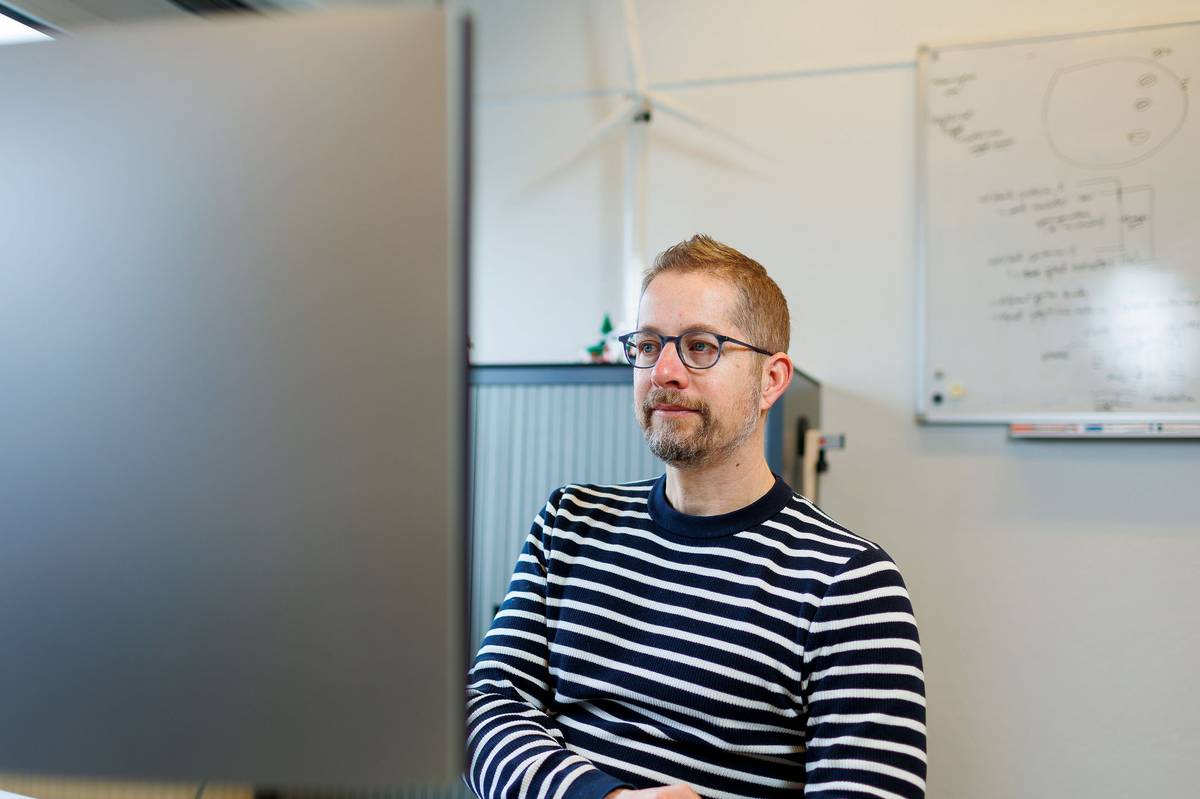"Two wind turbine manufacturers have fallen victim to cyberattacks in recent years," says Roland van Rijswijk-Deij, a professor of Network Security at the University of Twente. "Due to ransomware, they lost control of their wind turbines. They suddenly became unmanageable. In one case, this delayed the commissioning of a wind farm, causing significant economic damage."
Van Rijswijk-Deij is the scientific director of the Twente University Centre for Cybersecurity Research. He investigates techniques to enhance the resilience of the internet and the energy system. According to him, the Netherlands can currently mitigate disruptions effectively. "Electricity production is concentrated in a few locations that can be well secured. The electricity grid also has redundancy and there's a strong connection with foreign networks to absorb shocks. As a result, the impact of a possible attack remains limited for now." However, this will change as the Netherlands relies more on sustainable electricity. "As more electricity is generated decentralised, there are more opportunities for attacks. This makes security more challenging. Therefore, this is the right time to implement more countermeasures."

False signals
Operators remotely manage offshore wind farms and rely on the signals they receive. This provides additional opportunities for an attacker to manipulate the sensors monitoring wind turbines. These sensors, for instance, raise alarms for dangerous vibrations or detect the need for maintenance. Forged signals can potentially damage the turbine. "This is not hypothetical," Van Rijswijk-Deij explains. In 2009 and 2010, a cyberattack was conducted on the control system of ultracentrifuges to sabotage the production of atomic bombs in Iran. "Those centrifuges subsequently malfunctioned due to dangerous vibrations."
The control systems in the industry (SCADA) originate from a time when it was not customary to connect them to the internet, making them vulnerable. "These are complex controls," says Van Rijswijk-Deij. "It requires specialized knowledge to install and manage them. Those who possess that knowledge are usually not also security experts. That combination is rare. This is where universities like ours and other educational institutions, such as the vocational educators, have a role to play."
Standardization as a threat
Vulnerability increases when everyone starts using the same systems. "Most solar panels have inverters from only a handful of suppliers. If a cyberattack succeeds there, everything goes down. The wind turbine market is more diverse, but if everyone has the same supplier, an attack on a component can still have a significant impact. A motivated attacker will figure this out."
To preempt an attacker, we need to figure this out ourselves, Van Rijswijk-Deij advises. "As a first and most urgent step, supply chain dependencies must be thoroughly mapped out to create a sharp risk assessment. Many parties are involved in wind farms, from start-ups to venture capitalists, from steel suppliers to data analysts, and from ecologists to small maintenance ship operators. They are all interconnected, but no one has an overview of all the security measures. You need to know where vulnerabilities exist and what the consequences are if something goes wrong. We really need to gain control of this quickly. That picture is never complete; you must keep updating it as you learn new things."
Imposing Requirements
According to Van Rijswijk-Deij, the second step is to impose security requirements. He uses ASML as an example. This Dutch company manufactures complex machines for producing microelectronics, which require utmost precision. Therefore, all suppliers must have their security in order. "ASML controls the entire supply chain. The company not only sets requirements for suppliers but also assists them with security. ASML is one manufacturer producing one type of machine. The energy system is broader and, therefore, harder to regulate."
He believes that this cannot be prescribed through legislation. "That's too slow. This needs to be addressed in the tendering process for wind farms." With the significant scaling up of offshore wind energy in the Netherlands, he considers this the second urgent action.
Chain Reactions
Wind farms are also vulnerable due to events elsewhere in the electricity grid. Grid operators already take into account that during halftime of a football match, hundreds of thousands of refrigerators are opened and then start running. This requires additional production capacity to balance supply and demand on the grid. "Human behavior also makes the energy system vulnerable. An unexpected surge in consumption can have a domino effect. So, you will need to steer that behavior." According to Van Rijswijk-Deij, this can be achieved, for example, with dynamic tariffs. However, this carries its own risk. "It's nice that washing machines turn on when electricity becomes cheap due to computer control, but an attacker can also try to manipulate that control. Wind farm operators are always vulnerable to what happens elsewhere in the network, even if they have their own security well in order. Because those wind farms respond to measurements from the grid, often automatically, and adjust their behavior accordingly."

Humans as a Risk
Attackers have an interest in disrupting the energy system. They are motivated and have staying power. "You shouldn't think of teenagers wanting to cause trouble. We need to protect energy systems from state actors and serious criminals. Step by step, over many months, they infiltrate a system. It almost always starts with individuals. People who are tempted to install malware. Administrators who don't update their systems on time. Users who don't report suspicious activity promptly." Therefore, attention to the human factor is crucial, according to Van Rijswijk-Deij. "You need to convey the right information so that people can make decisions and intervene in a timely manner, without getting overwhelmed by alarms."
Digital Twin
Information about an impending attack can be provided by a digital twin. This is a computer model that simulates the energy system - or a part of it. In the industry, this is a proven way to secure installations. As long as the simulation and the real energy system exhibit the same behavior, everything seems fine. For instance, the digital twin simulates the heating and vibrations that occur when a wind turbine operates. This is compared to the measurements from sensors in the actual turbine. If the turbine doesn't seem to heat up while running, something is amiss. The digital twin detects such deviations at an early stage. The operator can then intervene before the turbine sustains damage. In this way, the digital twin can also simulate the properties of cables, blades, and electronics - in their interconnections. In addition, a digital twin can check commands given by operators and control systems before they are executed. A digital twin acts as a gatekeeper that predicts whether a job is safe for the turbines.
A digital twin thus combines knowledge about physical processes with what happens in the digital domain. "This allows you to detect advanced attacks earlier," says Van Rijswijk-Deij. It is not necessary to pre-determine where a cyber attacker might strike. The digital twin only needs to detect an inconsistency to raise an alarm.
To prevent domino effects, it's essential that the digital twin extends beyond just wind farms. The entire energy system should be simulated in this manner.
Accurate models of the physical infrastructure are required for a digital twin. "They should be able to detect small changes. That has to be very precise," says Van Rijswijk-Deij, "otherwise, you'll get false alarms, and you'll be sending an expert to the North Sea for no reason." Therefore, creating a digital twin is a significant project that requires a lengthy preparation. "We need to start as soon as possible," he proposes as the third urgent action.
'The importance of digital twins is also recognized by the European Commission. A large European project was recently started around digital twins, TwinEU, for the energy transition. A number of grid operators are participating in this, as well as our colleagues from TU Delft.'
A digital twin works with data that is partially confidential. This data provides insights into the characteristics and performance of wind turbines and how they are managed. It is sensitive information. "But cyberattacks are a collective problem, and everyone has an interest in a solution. Therefore, agreements must be made about the use of this data. We need all the parties in the sector on board."
Building a Resilient Energy System Together
-
In collaboration with the Ministries of Economic Affairs and Climate Policy, and Interior Affairs, along with TNO, TKI Offshore Energy and the Digitalisation Program of EnergyInnovationNL are working on FLECS. FLECS stands for Field Lab Energy Cyber Security. This is an expertise center in development where governments, knowledge institutions, and market parties collectively develop and stimulate knowledge, innovation, and testing to achieve a digitally resilient energy system in the North Sea.
Words by Bram Vermeer. Photography by Robbert Brink.
